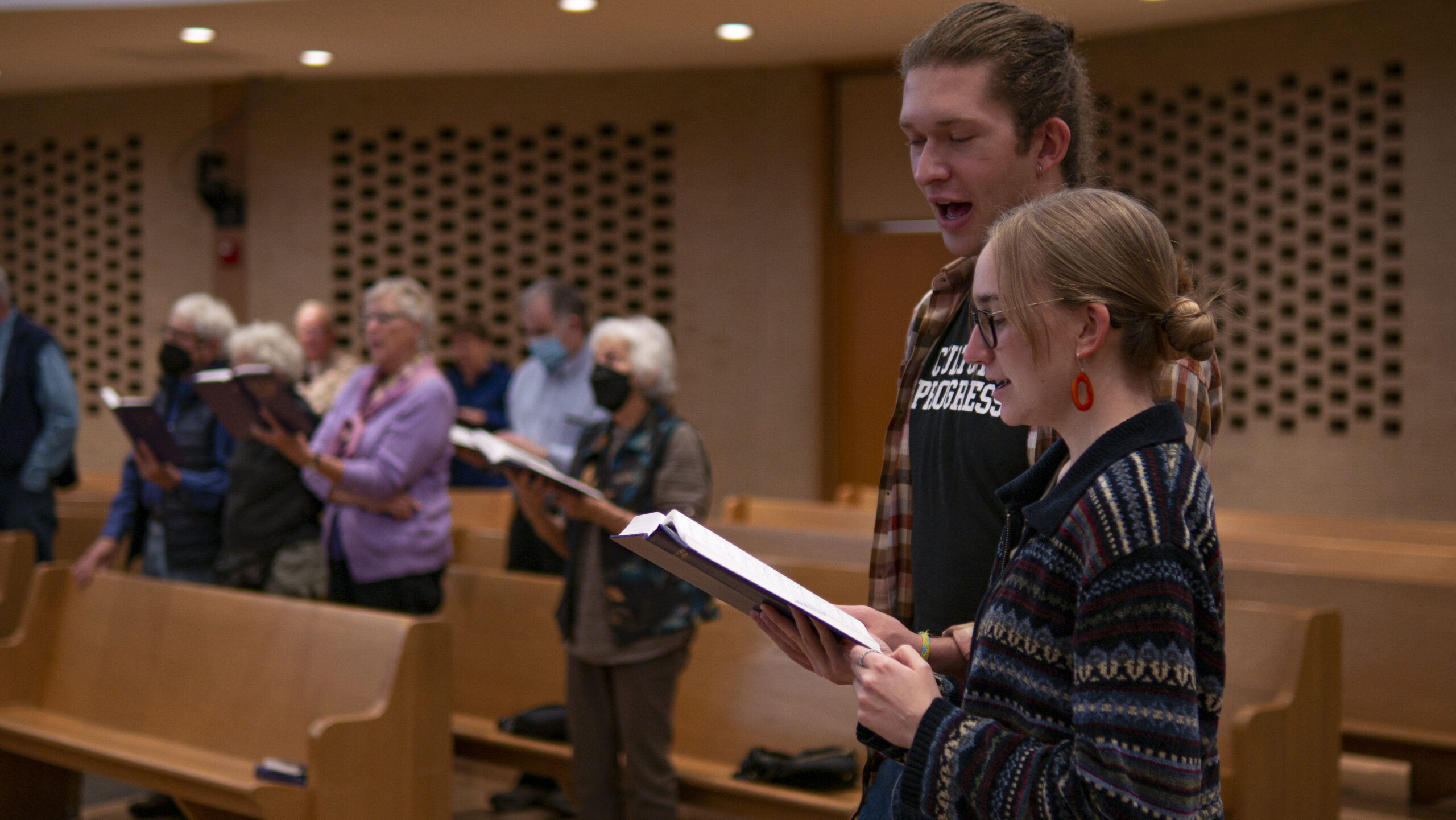A group of 100 or so people convened in the College Mennonite Church-Chapel this past Sunday for a hymn sing. It wasn’t just any hymn-sing; hymns were paired with artwork in “Voices Together,” with reflections on the art and hymns happening between songs.
Three people presented, all graduates of Goshen College: Bradley Kauffman, general editor of “Voices Together;” Adam Tice, text editor; and SaeJin Lee, co-chair of the visual arts committee.The first hymn, led by Lee, was number 732: “Open My Eyes (Abre mis ojos).”
“As we are singing the songs in the hymnal but also looking at the visual arts that are included,” she said, “this song talks about opening our eyes, our hearts and our ears.”
Congregants stood, and for a few moments, all hundred plus voices sang in unison.
Singing in Mennonite churches is nothing new — visual art, however, has taken some getting used to. Rachel Epp Buller, assistant professor of art at Bethel College, curated a “Voices Together” themed exhibit that currently resides in the Good Library for a few more days.
“Voices Together (2020) is the first Mennonite hymnal to include works of visual art,” her artist’s statement reads. “Despite a long history of Mennonite and Anabaptist reluctance to embrace — or even hostility regarding — visual imagery, we now have the chance to explore what both musical and visual expressions might offer to our church communities and worship experiences.”
The next song was number 11: “Mountain of God.” Directly across the page from it was one of Lee’s works, “Tree of Life.” A tree is portrayed, surrounded by a variety of humans and animals young, old and diverse.
“When I was creating this piece,” Lee said, “I was thinking specifically about the children of our church; how it could be engaging in worship, not just when they’re bored during the sermon, but how can our worship books include them in a way that they feel invited to be a part of the church?”
Pieces aren’t always paired intentionally with artwork. However, Lee noted that “sometimes the pairing between songs and images are in interesting dialogue.”
“Verse two talks about the blind who can see, and weary who rest; the image here in how I depicted this tree of life, there’s a woman in a wheelchair, recognizing that we have various differing abilities among the children of God.”
Sunday’s hymn sing was an artistic experience, with creative choices and risks taken. Two of the hymns that images accompanied could be sung together in unison.
“It occurred to me that bringing hymns into conversation can mean some interesting things,” Tice said. “Musically, they can interact with each other. If you don’t get to do weird experiments at a hymn sing like this, where do you?”
“I would like the folks from about here over to turn to number 182; everybody else from about there over, stay on 103. We’re going to sing both of these melodies in unison at the same time. Unison only; do not sing the harmony, ‘cause then it will get real messy.”
Singing two songs simultaneously isn’t traditional. Neither is using visual artwork in a Mennonite hymnal — it’s a new layer.
“The visual artwork is not intended as illustrations of particular hymns,” Tice continued, “instead, each piece should be seen as standing on its own, representing what it represents, and being experienced as a work of art independently. As you live into the hymnal over the coming years, take notice of how songs on facing pages speak to each other.”




